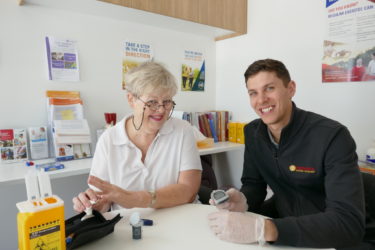If you have type 2 diabetes and wouldn’t mind an extra $2,820 in your pocket each year – see an Accredited Exercise Physiologist.
Could it be that simple? According to this 2016 Deloitte report, it could be. The report identifies some significant savings for the healthcare system, but also savings to the individual themselves.
So, here are the facts and figures you need to know:
Overall benefits of AEP interventions to people with type 2 diabetes estimated to be $3,197 per person in 2016. Ka-ching, yes please!
Where are these savings being made?
- Improved wellbeing
- These fun things called Disability Adjusted Life Years (DALYs) can be used to determine the cost of wellbeing. Turns out that managing diabetes improves overall wellbeing, which reduce DALYs and saves you big bucks!
- Reduced consumer health system expenditure
- This one is simple – better managed diabetes means less chance of being admitted to hospital and fewer visits to the GP – saving you $$$
- Improved consumer productivity
- People with Type 2 Diabetes average 13.2 days of lost wage income each year – stay healthy, work more, earn more!
The costs of AEPs interventions were estimated to be $580/year, but thanks to initiatives such as Medicare’s Group Allied Health Services for Patients with Type 2 Diabetes, this is reduced to about $377 out of pocket for the patient.
So the brainy people at Deloitte did some magic (maths) and calculated something called “The Benefit-Cost Ratio”. Basically, from the perspective of the patient, for every $1 you spend you would expect to receive $8.50 in return through improved wellbeing, reduced health system expenditure and consumer productivity losses. After a year that translates to $2,820 per person.
Give me $1 and I’ll give you $8.50 back – would you do it? Can you trust that? Personally, I’m willing to trust Deloitte and their maths, but I’d also want to trust the AEP who is going to deliver these outcomes…
Enter Dan.

Dan has been running Bodytrack’s T2DM program for almost 2 years now, so I’ve hit him up to tell us 3 key reasons an intervention by an AEP is different to just “exercise” as an intervention itself.
- You learn to work smarter not harder. Exercise can be daunting, but because an AEP is university qualified to provide specialised prescription and education, you’ll soon realise that it’s not about puffing and sweating for hours, but finding the right type of movement for your body and condition.
- Accountability. Knowing that you need to exercise regularly and actually doing it can be very different things. Having an AEP who knows how to motivate you and who is going to notice if you skip a session, can make a big difference in turning a new behaviour into a habit.
- Shared experience. A big part of the groups I run comes down to facilitating participants to talk to each other. People realise they have the same questions and struggles as others, which I think is reassuring, and then I’m there to answer those questions and offer guidance. Plus, exercising in a group is a lot more fun than going it alone!
Right, so what’s the take home message? If you have Type 2 Diabetes, find your local Accredited Exercise Physiologist and it could save you money… as well as your life!
